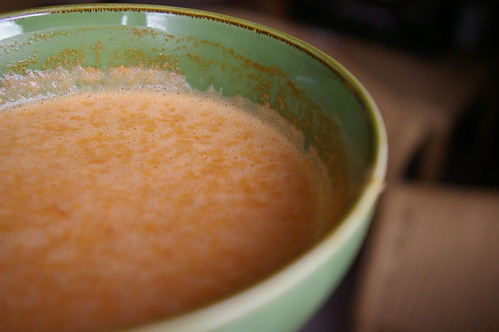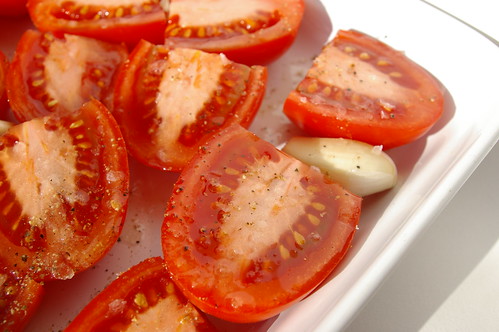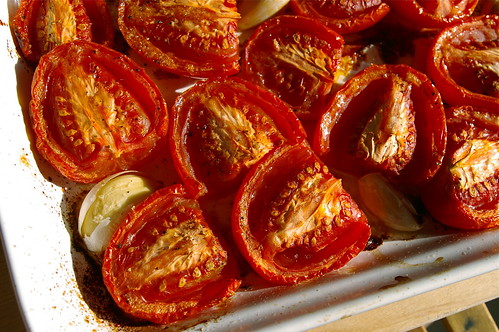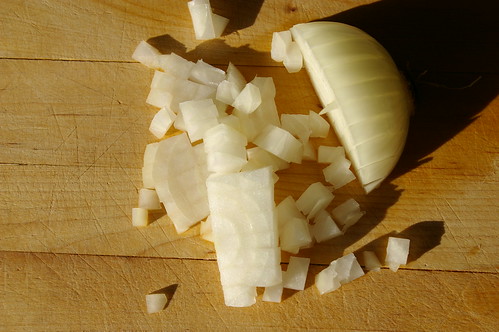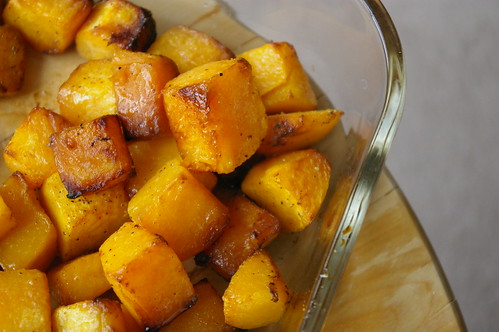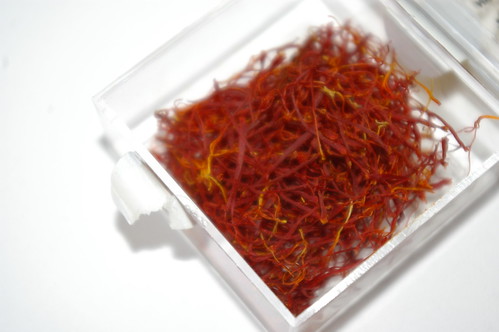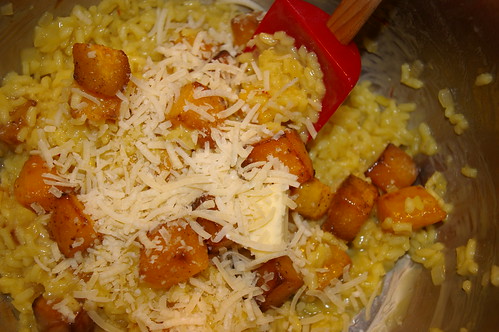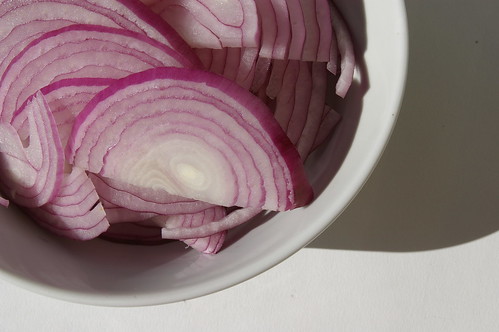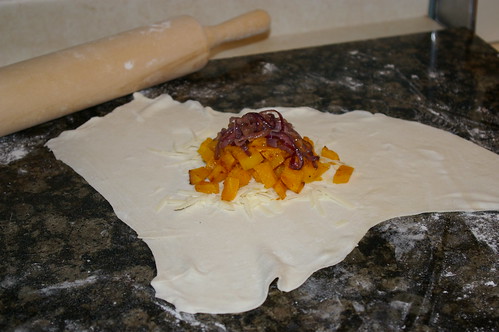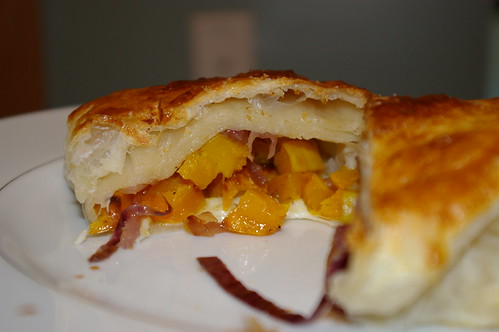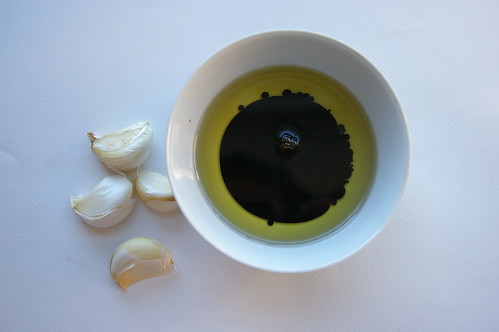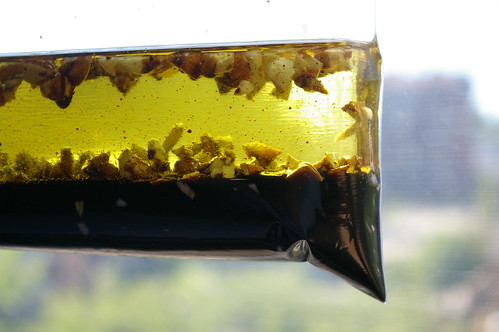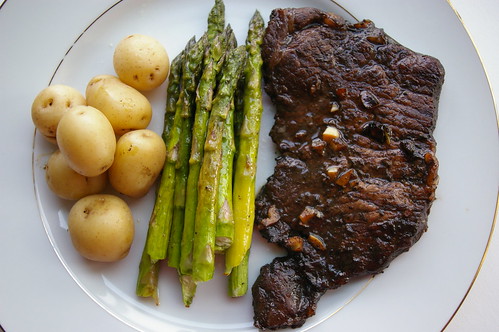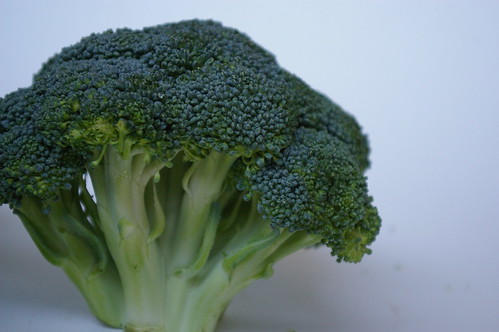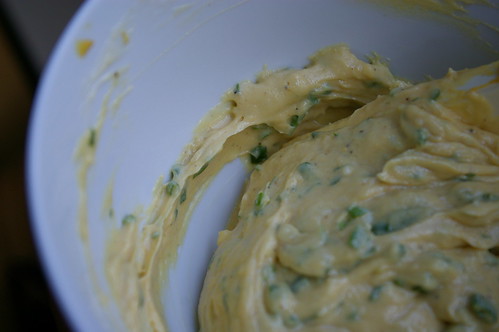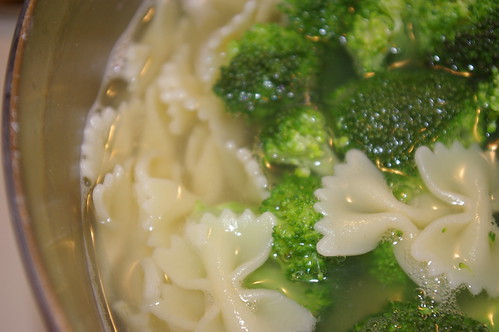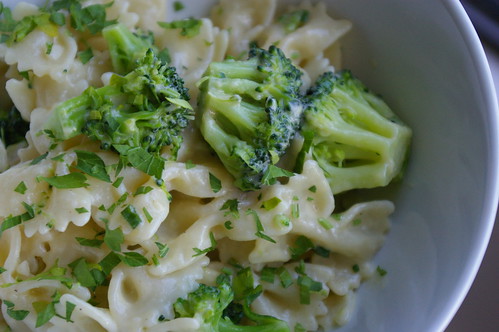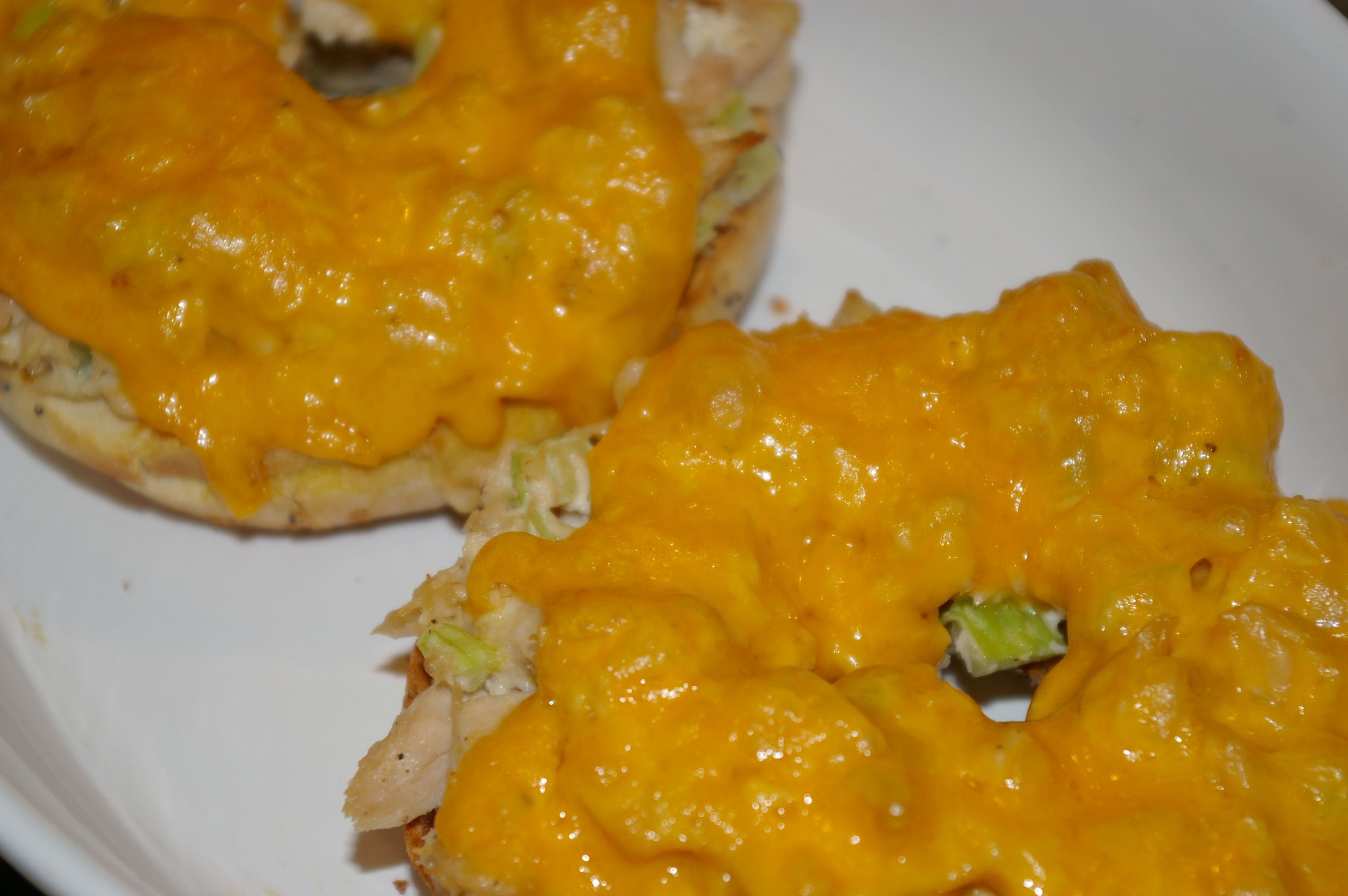Sometimes, my apartment is the place where tomatoes go to die. I buy them, forget about them, and the slowly grow old, wrinkling away in their clamshell package until I’m utterly baffled about what I can do with them.
And then I had a brainwave (triggered in no small part by a recipe I saw over at 101 Cookbooks and then combined with an article from one issue out of my random collection of Cook’s Illustrated): why not roast them and make them into a soup? Then it doesn’t matter if they’re wrinkled. Or if they are wintry supermarket tomatoes that have virtually no flavour. Roasting will take care of both problems, especially the lack of flavour aspect as their summery, tomato flavour will intensify in the oven. Throw a couple of garlic cloves in with the tomatoes while they roast and add a hint of buttery, roasted garlic flavour to the soup.
The first time I made this, there was a tomato emergency. The collection I had was rapidly going south and was going to have to be tossed soon if I didn’t figure out something to do with them. Of course, since I was just playing around in the kitchen, I didn’t bother documenting the process.
The soup was full of flavour and velvety smooth. It was definitely a keeper.
The second time I made the soup, it was almost as good, but I’m going to suggest not using as much stock as I did this round. The first soup, which only had about two cups of stock, had a much more intense tomato flavour, which is what made the soup so great. The second one, I used three cups of stock. The tomato flavour was duller and I won’t be doing that again.
Roasted Tomato Soup
- Six or seven tomatoes, cut in half or quarters depending on their size
- 2 tablespoons olive oil, divided
- one onion, diced
- four cloves garlic, unpeeled
- 1/4 cup brandy, optional
- 1 tablespoon sugar
- 2 cups chicken or vegetable stock
- 1/4 cup cream, milk or half-and-half
- Salt and pepper
Preheat the oven to 375. Cut tomatoes in halves or quarters, depending on their size, and lay cut side up in a roasting pan. Throw in unpeeled garlic cloves amongst the tomatoes. Drizzle everything with one tablespoon of olive oil and sprinkle with kosher or sea salt and fresh ground pepper. Roast for 30 to 45 minutes until the tomatoes and garlic have started to caramelize.
Heat the remaining tablespoon of olive oil in a saucepan on medium heat, then add the diced onion and saute until transluscent — about four or five minutes. Add brandy, if using, and cook for another minute or two. Add sugar, then stock. Bring to low boil.
Remove paper skins from garlic, then add the tomatoes and garlic into the pot with the stock. Let cook for a few minutes. Pour everything into blender and whiz until velvety smooth. Add cream or milk and whiz for another minute. Taste for seasonings. (Since there is salt on the tomatoes and in the stock, I advise waiting until the end before seasoning because you may not need to add anything.)

